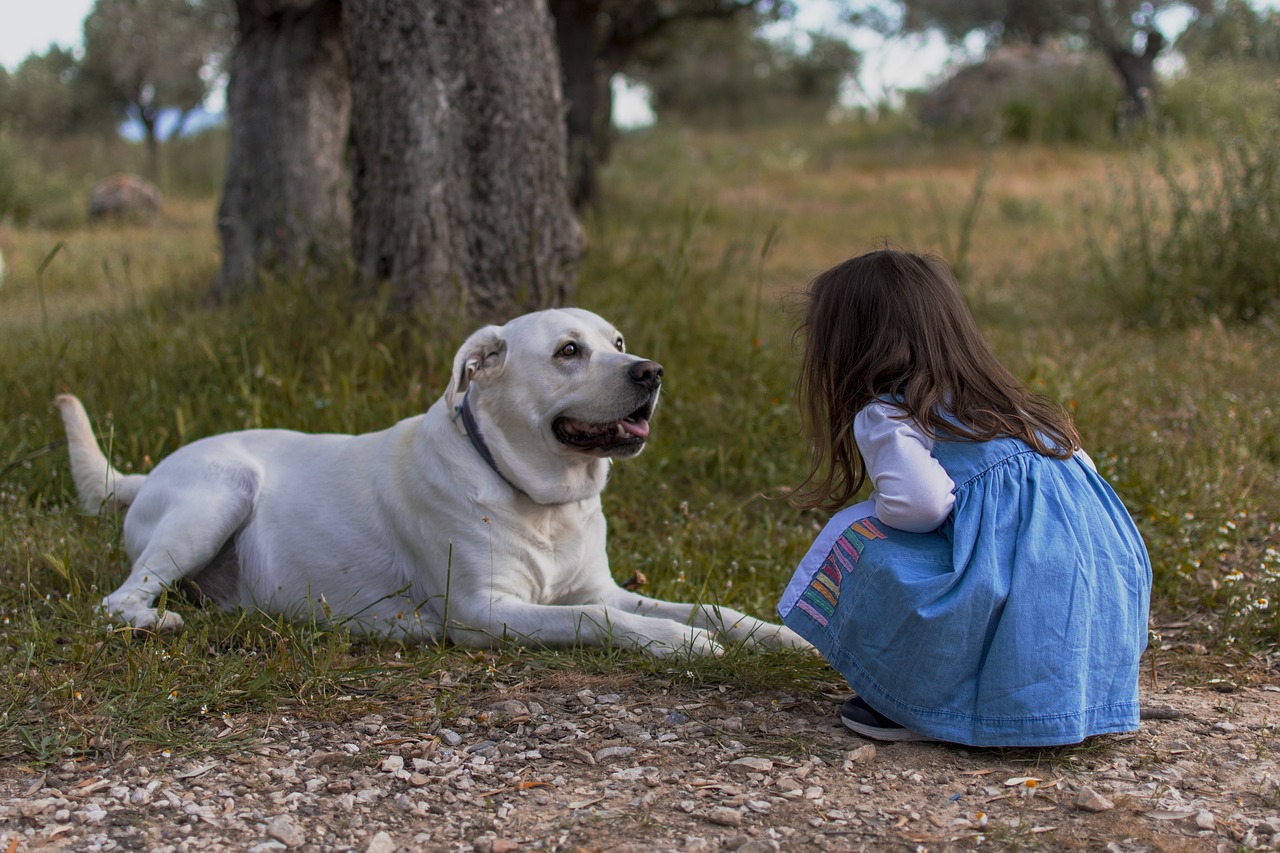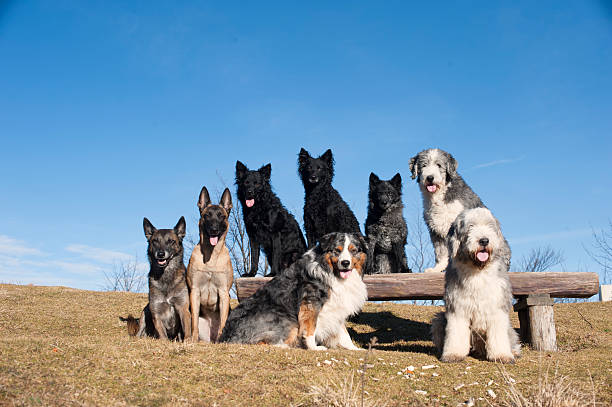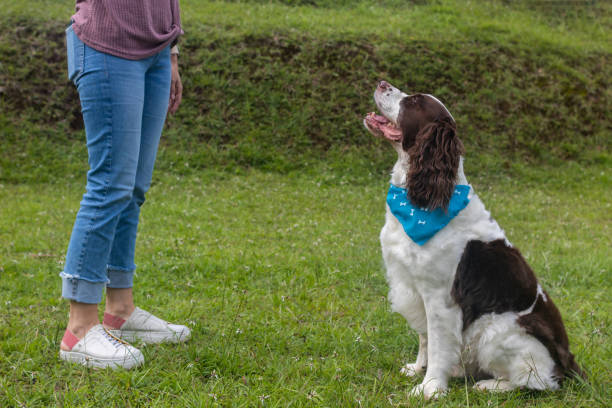Frequently dubbed “man’s best friend,” dogs are cherished for their devotion, warmth, and their enthusiastic welcome of their human companions. Owning a dog offers a remarkable opportunity to teach children about responsibility and empathy if you are parents. If you’re contemplating adopting a dog or bringing a new furry member to the family, this serves as your comprehensive guide for looking after your new companion.
How to Introduce Your Dog to Your Kids
If you’re one of the dog owners who also happens to be a parent, there’s an even better chance that you’ve thought about how your dog will get along with your kids. After all, having both in the same house can be a recipe for disaster or some of the best childhood memories ever. Here are a few tips on introducing your dog to your children at a very young age.
Start Slow
It’s important to take things slow when introducing a new pet to a household with young children. Let your kids take the lead in getting to know the new dog, and don’t push them too hard. If they’re not interested in interacting with the dog, that’s OK – let them come around at their own pace.
Introduce your dog to your child in a positive way. For example, let the child stroke the dog and take him for a walk in a dog park for the first few weeks. As your child becomes more comfortable with the dog, encourage him to be more involved by asking questions like “What does he eat? How does he play? What does he like to do?”
Separate from Your Dog
If your pets belong to small dog breeds, leaving them in a room with the children is OK – close the door. Don’t allow your children any time alone with the dog. If the children are toddlers and babies, keep them aside for at least an hour after your dog’s bedtime. The last thing you want is a child attacked by a dog that’s been left alone with him.
Keep the dog on a leash: Consider using a leash if you’re unsure about allowing your children to interact with your pet. You don’t want a child tangled up in the leash and injured. If the dog is young, use a baby leash and don’t allow him to wander off.
It would be best to keep a close eye on your dog while he’s in his crate or room. Always set physical boundaries between your dog and child, especially if not introduced properly. If you see anything suspicious, immediately call the authorities.
Ensure that Your Dog’s Crate is Comfortable


Responsible dog owners ensure that the crate is large enough for the dog to stand up and turn around. It should allow room for his food and water bowl. Your dog could injure himself or become claustrophobic if it’s too small.
Ensure your dog has enough room to move around: Your dog should have plenty of room to turn around in his crate without being cramped. Remember that he may have to get out to relieve himself. Also, ensure your dog can turn around in his crate while eating or sleeping.
Check that the crate has a firm, clean floor: Your dog’s crate should have a solid floor free of debris and dust. Check frequently to ensure you haven’t accumulated dirt or dust in his crate. The crate should have a dog bed where your dogs can rest properly.
Teach Kids Dog Care and Dog Handling
Dogs can make great pets for kids, but teaching them how to handle them safely is important. Here are a few tips:
- Always ask the dog’s owner for permission before petting the dog.
- Don’t pet a dog if he eats or has food in his mouth.
- Don’t touch a dog’s head or tail.
- Be careful not to scare the dog.
- If the dog barks or growls, stop what you are doing and back away slowly.
- If the dog is being aggressive, call the police. Do not try to handle the dog yourself.
- Don’t tease a dog or play with him. If a child does this, she may get bitten.
- Don’t hang out with a dog where there are other dogs.
- Keep your dog on a leash when you go to the park or walk on a leash in public places.
Proper Feeding and Exercise
Feeding and exercise are key for taking care of a dog. It’s important to make sure your dog has a good diet and gets enough exercise. This will help keep your dog healthy and happy.
The best way to feed your dog is with a high-quality diet specifically made for dogs. You can buy this at most pet stores or online. Read the label carefully to know what’s in the food. The diet should include plenty of protein, carbohydrates, and healthy fats.
It’s also important to exercise your dog regularly. A good way to do this is by taking your dog for walks or playing fetch with them in the yard as part of dog care. Dogs need at least 30 minutes of exercise per day to stay healthy.


Grooming Needs
Dogs need a lot of grooming to stay healthy and look their best. In addition to brushing their fur, you’ll also need to trim their nails and clean their ears. It’s important to start grooming your dog at a young age so they get used to it, and it becomes a routine.
You’ll need a good quality brush and dog shampoo to brush your dog’s fur. Start at the base of the neck and work your way down, getting all the way down to the skin. Be careful not to scrub too hard or irritate the skin. If your dog has long hair, you must also comb it out regularly.
You’ll need a pair of nail clippers to trim your dog’s nails. It would be best to clean your dog’s ears with a cotton ball and some ear cleaner. If your dog is overweight, you can encourage them to lose weight by giving them less food. You can also try taking them on a walk every day or adding more exercise to your daily routine. The more activity they get, the more calories they burn.
Necessary Supplies
Kids need to know about the necessary supplies for caring for a puppy before they get one. Dogs need food, water, a place to potty, and exercise. It’s important to have these items before bringing the dog home.
Food is the most important item on this list. Dogs need to eat regularly and should have access to food. Many different types of dog food are available, so it’s important to pick the right one for your pet. The same goes for water; dogs need plenty of clean water daily.
New owners should note that dogs usually prefer to potty outside. You’ll need to set up an indoor potty area, but that’s impossible. Many indoor potty solutions are available, so be sure to research before choosing one.
Finding the right equipment for your pet can be challenging if you have a large dog. Dog crates are great, but they’re not exactly portable. If you want to go on vacation or travel with your pet, check out the best travel dog crates available.
As a dog owner, you should do everything possible to keep your new dog safe. The best way to do this is to get the right equipment for your pet and take the time to properly train it. Keep these tips in mind as you teach your dog how to behave.


Dog Training and Behaviour
The first step in training your dog is to get them comfortable wearing a leash. Start by putting the leash around your dog’s neck without attaching it to anything. Treat your dog and give them lots of praise when calm and relaxed. Once your dog is comfortable with the leash, please attach it to their collar and slowly walk them around. If your dog starts to pull on the leash, stop walking and wait for them to calm down before continuing.
Teaching your basic dog commands is also an important part of training. “Sit” is one of the most basic commands and can be taught by holding a treat in front of your dog’s nose and slowly moving it upwards until their butt hits the ground.
“Stay” is another important command that can help keep your dog safe while you’re not around. Once your dog is comfortable with the leash, please attach it to their collar and walk them around the neighbourhood for a few minutes. If your dog starts to pull on the leash, stop walking and wait for them to calm down before continuing.
Your dog may not be ready to go out on a walk yet, but they can still get used to the leash while inside. Once they’re comfortable with the leash, please attach it to their collar and walk them around your home for a few minutes.
Crate training is also a good idea if you leave your dog alone for long periods. If you think your dog may be anxious in a crate, take them out and do some basic exercises beforehand, like walking around the house or playing tug of war.
Handling Common Problems
One of the best things about having a dog is that kids can learn how to handle responsibility. However, some common problems can arise when caring for a dog, and kids need to know how to deal with them.
One common problem is house training. It’s important to start house training immediately and be consistent with commands. If accidents happen, cleaning them up is important so the dog doesn’t get used to going potty in the house.
Another common problem is obedience. Dogs need to be taught basic commands like “sit,” “stay,” and “come.” Kids must keep enforcing these commands even after the dog has learned them, or they may start reverting to bad habits.
The last common problem is feeding. If you have a dog used to getting food from the table, it’s best to start feeding them in their room, where they can be supervised.
If your dog gets food from the table, it’s important to ensure they don’t get too much. You can also take your dog to a doggy daycare if you regularly take them on walks. This will allow your dog to run around, play with other dogs and socialize. The more time spent outside, the better.


Vet Visit
Regarding veterinary visits, there are a few things kids need to know. The most important thing is that the dog needs to be calm and relaxed. This means no pulling on the leash, barking, or whining in the waiting room. If the dog is anxious, it will only make the visit more difficult for them.
Another thing kids should keep in mind is that vets are there to help animals, not to scare them. It’s important not to ask too many questions at once or bombard the vet with information. Finally, always remember to thank the vet for their time and care.
Spaying and Neutering
Spaying and neutering are surgical procedures performed on animals to prevent them from reproducing. Spaying removes a female animal’s ovaries and uterus, while neutering removes a male animal’s testicles.
Both procedures are considered routine and are generally safe. However, some risks are associated with spaying and neutering, including infection, bleeding, and anaesthesia complications.
The benefits of spaying and neutering far outweigh the risks, however. Spayed females are less likely to develop ovarian or uterine cancer. At the same time, neutered males are less likely to develop prostate cancer or testicular cancer.
Additionally, spayed females do not go into heat as often, and both spayed and neutered animals tend to be less aggressive and more social than their unaltered counterparts.
One of the most important things you can do for your dog is to have them spayed or neutered. This surgery helps control the pet population and has health benefits for your dog. Spayed or neutered pets are less likely to develop cancer and other health problems.
Conclusion
In conclusion, caring for a dog is a great way for kids to learn responsibility. Still, it is also a fun and rewarding experience. By following these tips, you and your furry friend can enjoy a long and happy life together.



